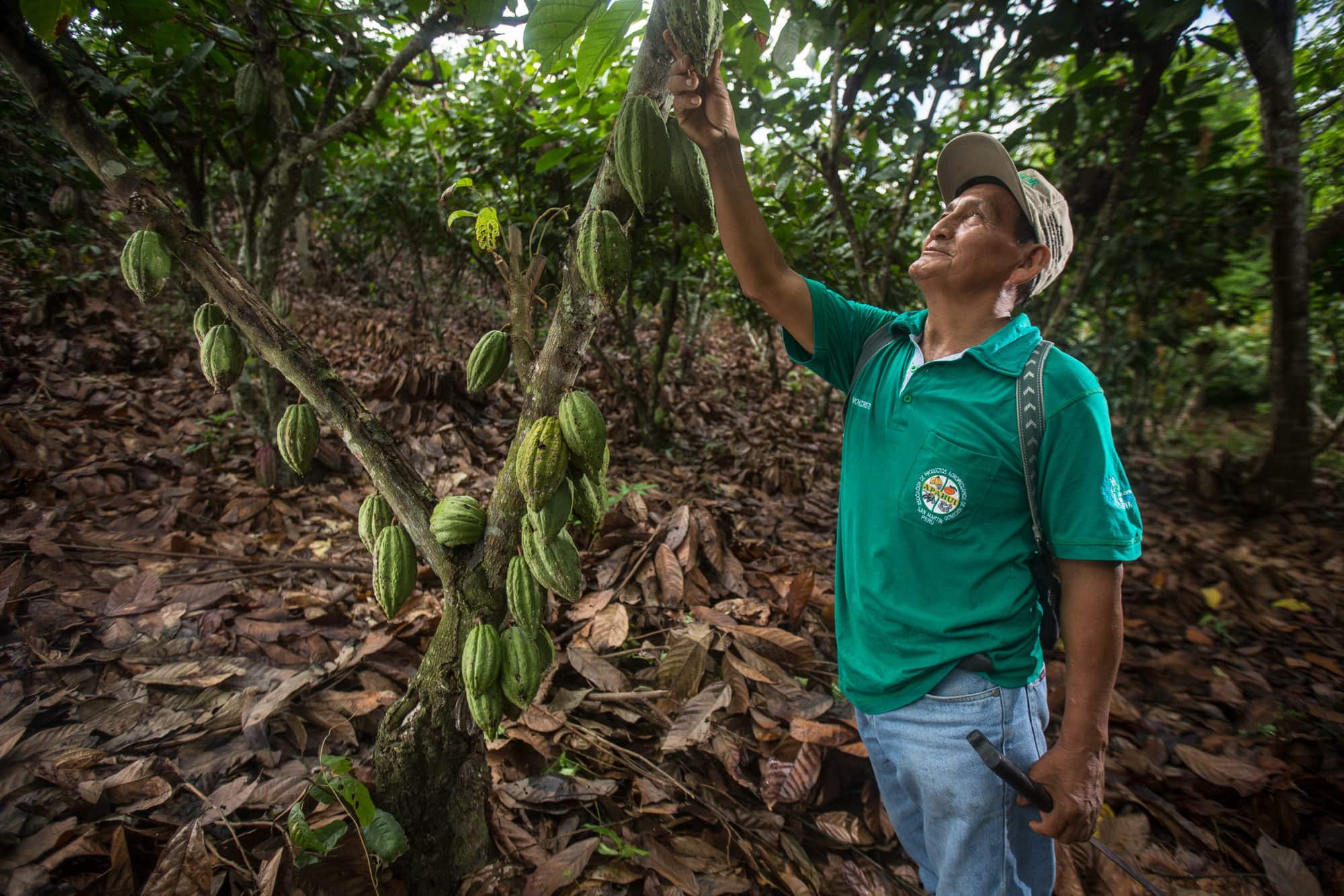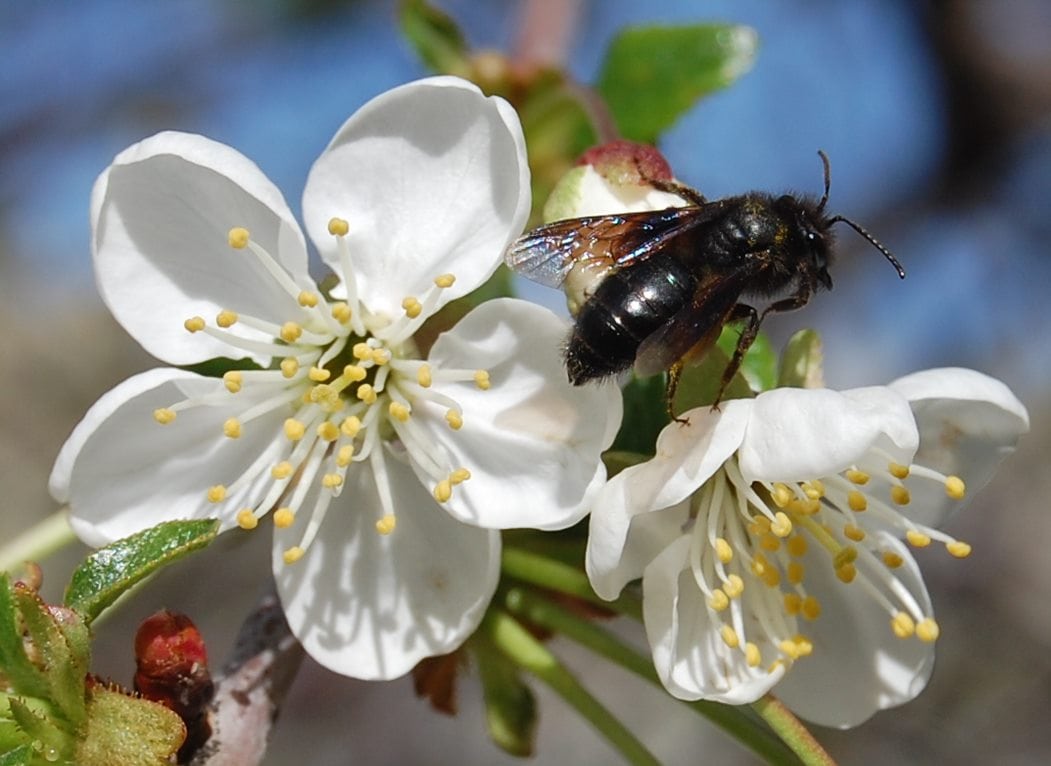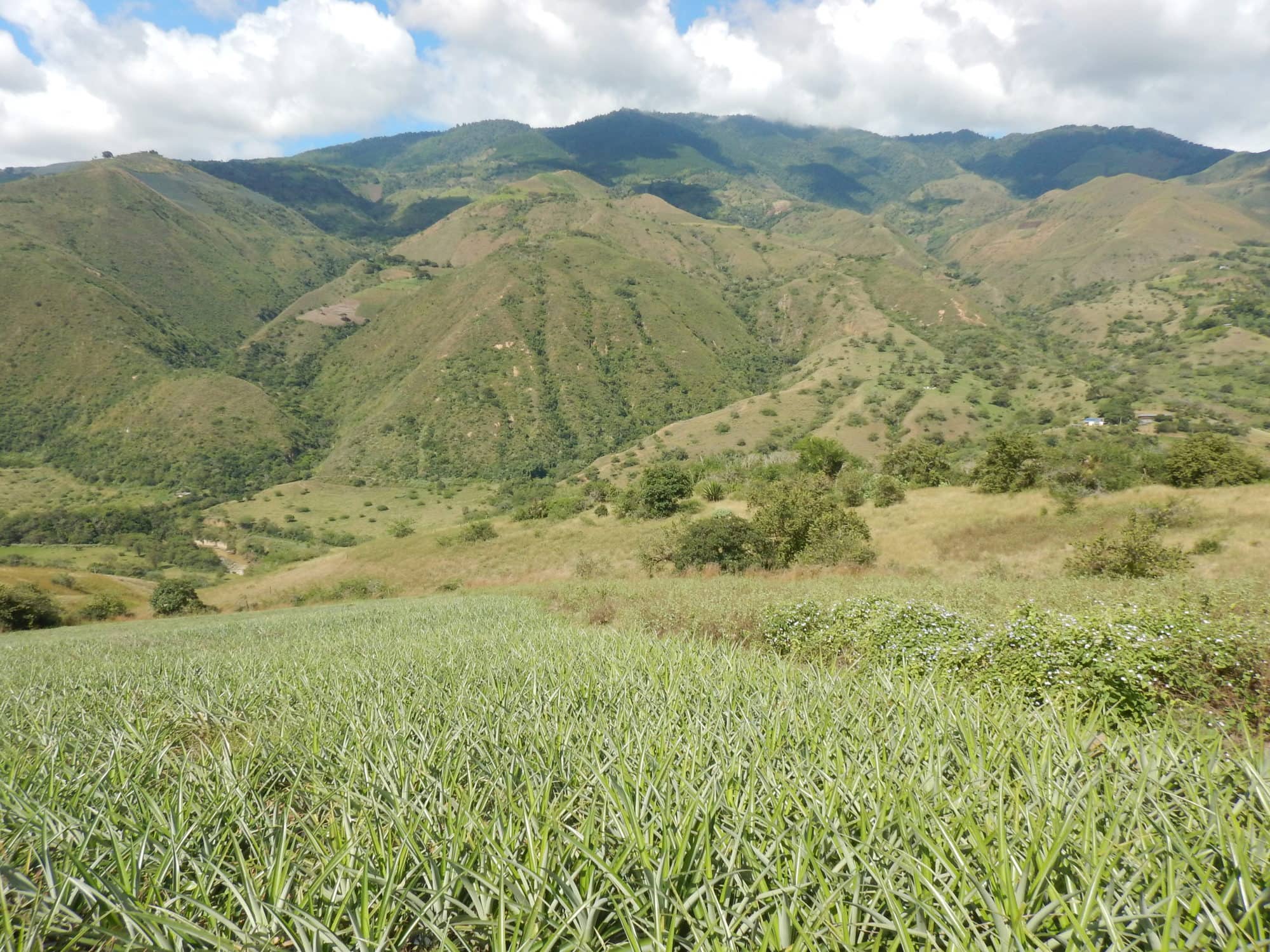But our food systems are now failing in the face of 21st century challenges.
BACK TO TOP
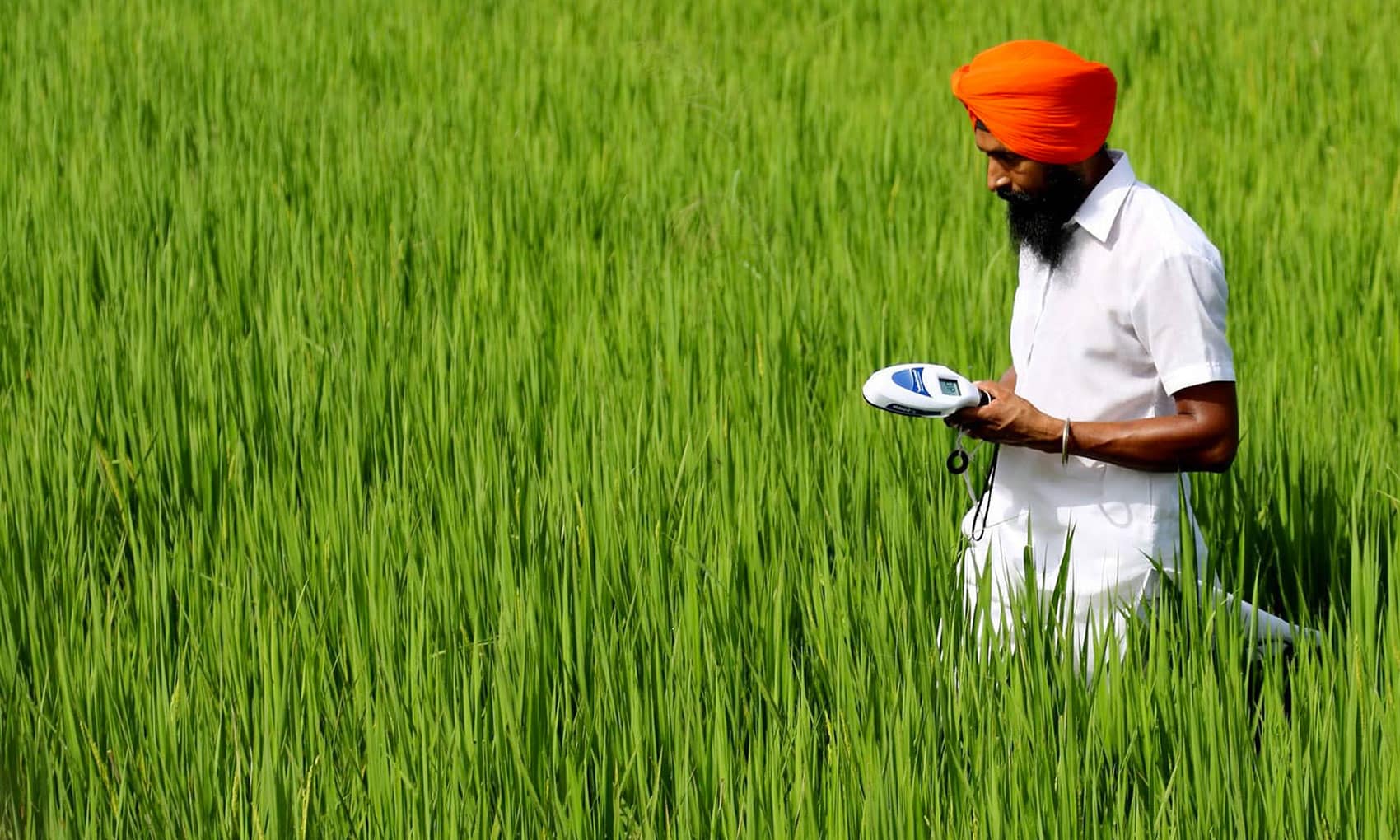

Innovations for a climate crisis
For 50 years, CGIAR innovations have helped to reduce poverty and hunger worldwide ...
Foremost among these is the climate crisis that poses an existential threat to humanity.
We must act to change course.
Here’s how CGIAR innovations are reinventing food, land, and water systems in a climate crisis.

One CGIAR at COP26
CGIAR, the world’s largest agricultural research and innovation network, is a vital knowledge and science partner for climate action in food, land and water systems. Building on over half a century of scientific excellence and global partnerships, CGIAR’s new strategy and portfolio put the climate crisis at the heart of agricultural research and innovation.
Climate-Smart Villages and Valleys

Smallholder farmers – their food supplies and their livelihoods – are at risk in the face of global climate change. Unsustainable farming practices are also part of the problem, contributing to greenhouse gas emissions. How can smallholders adopt better practices, and also adapt to a changing climate?
Climate-Smart Villages
Several solutions are now being trialed in Climate-Smart Villages across Africa, Asia, and Latin America, led by the CGIAR Research Program on Climate Change, Agriculture and Food Security (CCAFS). Established in high-risk areas that are likely to suffer most under a changing climate, the villages function as real-life laboratories for cutting-edge climate-smart technologies, information services, development and adaptation plans, and supportive institutions and policies.
In addition to farm practices, farmers in Climate-Smart Villages test new services, such as tailored weather forecasts to plan planting, harvesting and other activities on the farm. Advisories and weather forecasts are delivered by mobile phones, which are also used to enable farmers to buy index-based insurance that gives them a measure of protection in the event of extreme weather.
In the first phase from 2011-2014, as many as 18 Climate-Smart Villages were successfully established across West and East Africa, South and Southeast Asia, and Latin America. By 2017, a total of 35 were actively managed by CCAFS and partners, covering 20 countries. Today, the original Climate-Smart Villages are active in 12 countries, while thousands more have been scaled up via public and private sector involvement throughout South and Southeast Asia, potentially benefiting millions of farmers.
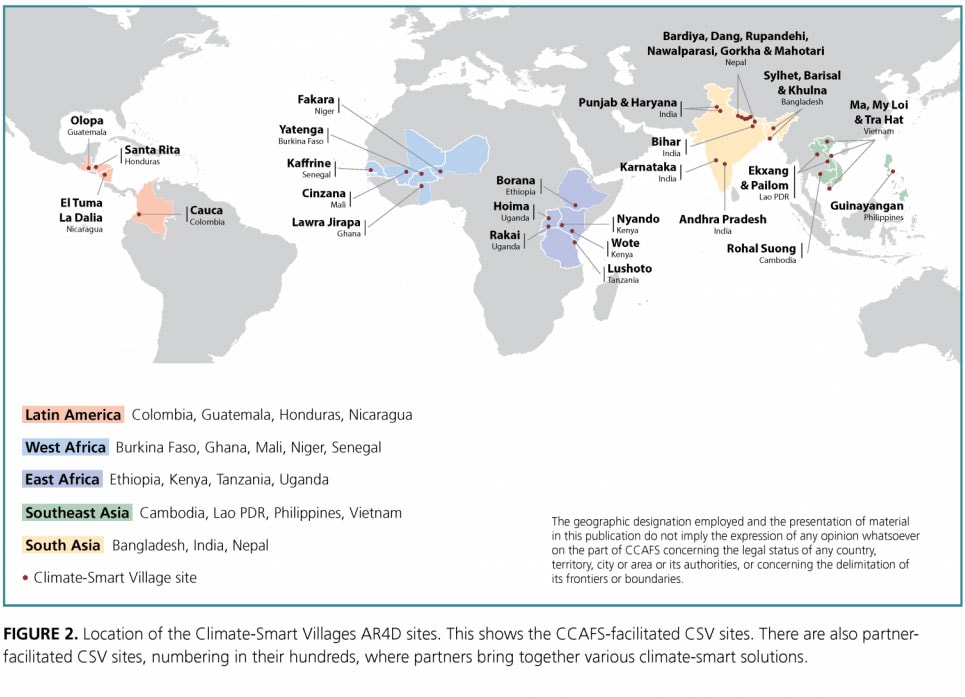 Source: CCAFS Climate-Smart Villages
Source: CCAFS Climate-Smart Villages
Climate-Smart Villages are:
|
Source: Scaling Climate-Smart Villages in India
-
Innovation




 active: 2013 to present
active: 2013 to presentAgroforestry and Payment for Ecosystem Services
READ MOREAgriculture depends on a healthy natural environment, and the ecosystem services it provides. Increasingly, agricultural research is intertwined with agroecological approaches and the sustainable management of natural resources. CGIAR research has pioneered several approaches in this area, including in relation to agroforestry policy and practice, and in establishing systems for payment for ecosystem services.
Climate-Smart Valleys
In West Africa, climate-smart innovations have targeted the problem of rice production in inland valleys. West Africa is far from self-sufficient in rice, and this situation is projected to worsen under climate change in the face of increased water issues related to floods and droughts. The Smart-Valleys approach was developed by CGIAR Research Center AfricaRice and partners as a low-cost, participatory and sustainable approach to develop the bottoms of inland valleys for rice-based systems.
The yields we are obtaining now are much higher than before – participating rice farmer
The approach follows a step-wise procedure focusing on design, layout and construction of low-cost water-control infrastructure, following a careful selection procedure that pays attention to both socioeconomic and biophysical factors, making extensive use of farmers’ knowledge. Major advantages mentioned by farmers are the increased water retention in their fields, less risk of fertilizer losses due to flooding and increased rice yields.
From 2012 to 2020, the approach was adopted via training programs in five countries in West Africa (Benin, Burkina Faso, Liberia, Sierra Leone, and Togo), recording a 94% increase in rice yield. An impact assessment study revealed that adoption of the approach had enabled producers to increase their net income by $267 per hectare under climate change-affected conditions.
-
Innovation



 active: 2009 to present
active: 2009 to presentA sustainable way to protect pollinators and raise farmer incomes
READ MORECGIAR researcher Stefanie Christmann at the International Center for Agricultural Research in the Dry Areas (ICARDA) has found an alternative way to support pollinators and their role in agriculture without depending on high public spending. The new approach, Farming with Alternative Pollinators (FAP), allows farmers to raise the diversity and abundance of wild pollinators while still generating income from their entire block of land.
Climate-smart maize
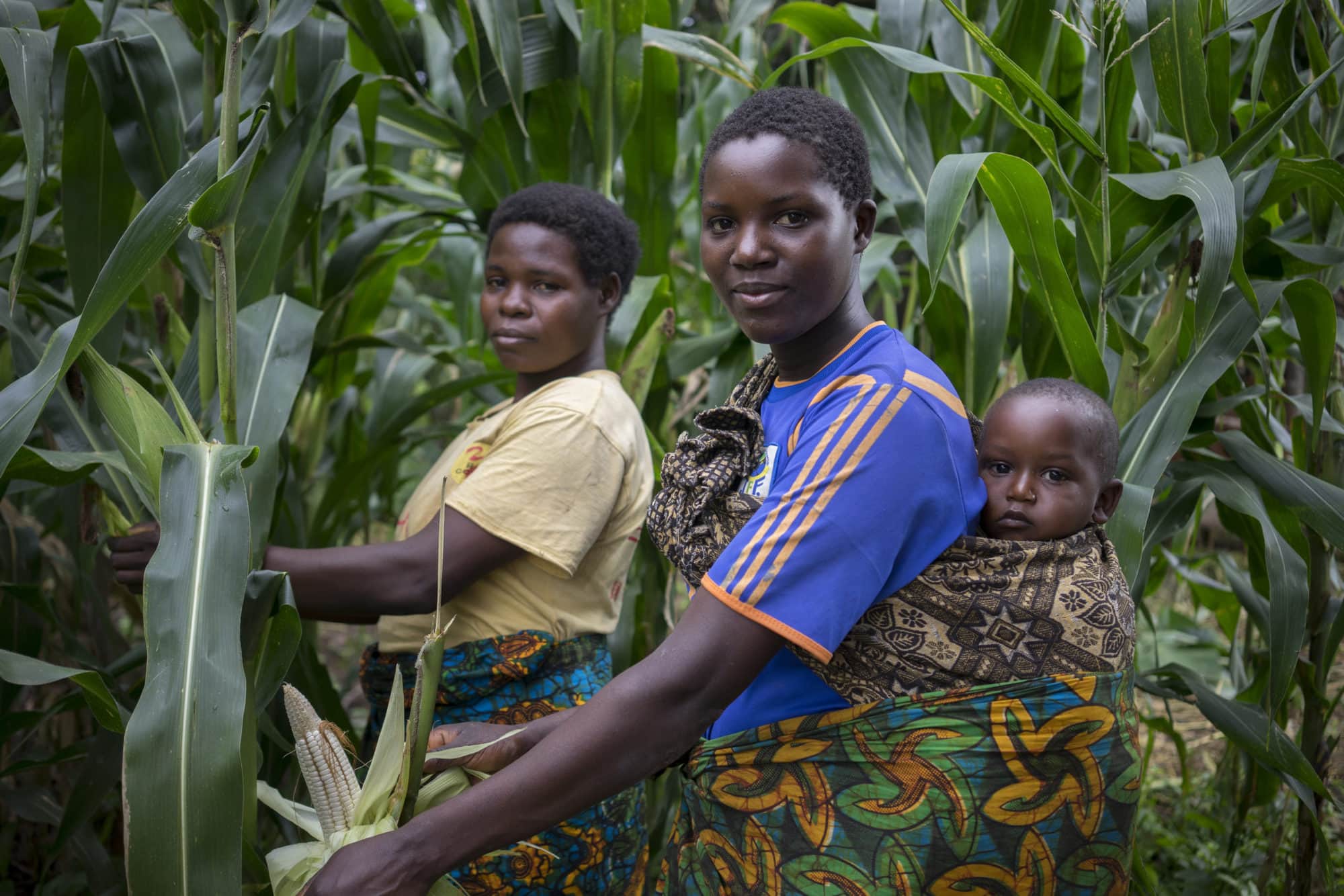
Maize is the number one food crop and source of sustenance for several hundred million smallholder farmers across sub-Saharan Africa – yet the crop frequently fails when hit by the region’s severe, recurrent droughts.
Since the 1980s, CGIAR scientists at the International Maize and Wheat Improvement Center (CIMMYT) have led intensive breeding efforts to develop drought-tolerant varieties of maize that can ensure food security, bolster climate resilience, and grow the livelihoods of resource-constrained farmers.
Smallholder farmers in 13 countries in Africa have benefited from the 200-plus drought-tolerant and disease-resistant maize varieties developed by CGIAR
Their work has produced breakthrough observations and methodologies. For example, climate-smart varieties have been bred through the genetic selection and testing of maize lines that survive and yield grain under stress of drought and nitrogen-depleted soils.
Yield increases have been further secured through an observation that plants in which the female flowers, or “silks” emerged quickly after the male flowers produced more grain and survived better in drought conditions.
Under the Drought Tolerant Maize for Africa initiative, and subsequently the Stress Tolerant Maize for Africa initiative, more than 200 improved climate-resilient maize varieties have been developed by CGIAR, and released by public and private sector partners across 13 countries in sub-Saharan Africa. To date, drought-tolerant and disease-resistant varieties are planted on more than 5 million hectares of land in sub-Saharan Africa, benefiting more than 8 million households.
These varieties give at least 25-30% greater yields than conventional varieties in drought-prone environments, especially when water deficit happens at the flowering stage, and reduce downside risk to farming communities. The work has been jointly implemented by CIMMYT and the International Institute of Tropical Agriculture (IITA) in close collaboration with national agricultural research systems and small- and medium-enterprise seed companies.
Climate-smart modeling and futures
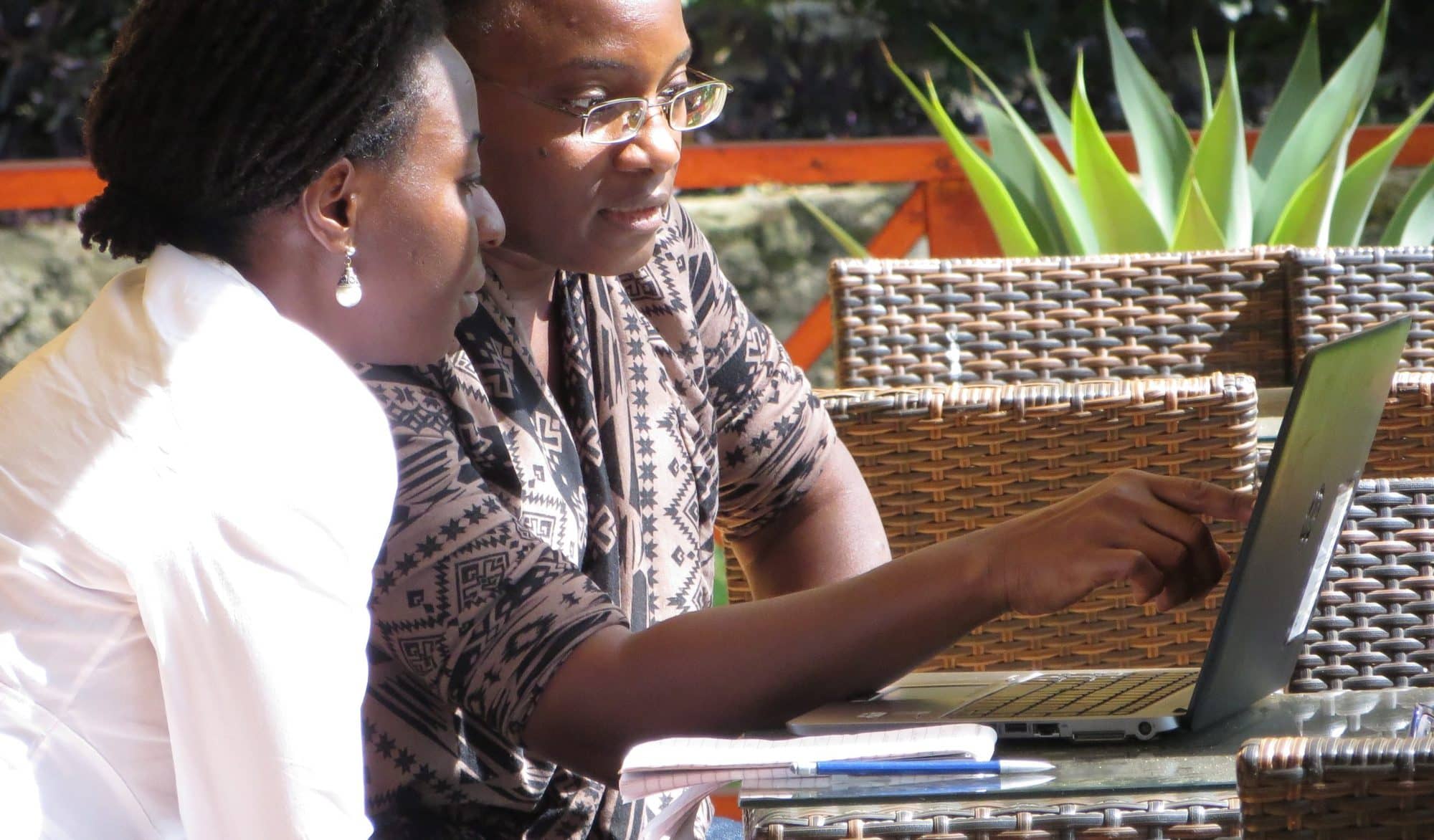
Modeling to explore the future impact of climate change and sudden shocks on food systems is becoming an increasingly important tool for policymakers. For more than 35 years, CGIAR has developed methods for surveillance, scenarios work, and modeling to inform policy globally on agriculture, development, and climate adaptation.
World-class innovations in modeling
CGIAR scientists at the International Food Policy Research Institute (IFPRI) have been world-class innovators in structural modeling to support analysis of food and agricultural policies, and to conduct foresight analysis. Through global models such as IMPACT and MIRAGRODEP, as well as country-level models, the work at IFPRI has helped inform policy on food security and agricultural development worldwide, especially in developing countries.
These innovations have underpinned improved policy decision-making by providing better insights into the impacts on sustainable development of agricultural innovation, trade dynamics, climate change, water scarcity, changing diets, and health crises, such as the COVID-19 pandemic.
-
Innovation

 active: 2009 to present
active: 2009 to presentModels and methodologies to track emissions
READ MOREAgriculture has a complicated relationship to climate change, posing both threats and opportunities for efforts to reduce greenhouse gas emissions, sequester carbon from the atmosphere, and help communities adapt to weather extremes. Accurately estimating the dynamics of this relationship, especially for the purposes of international reporting, requires complex models and methodologies. CGIAR researchers are involved in multiple projects worldwide to meet this need.
The knowledge that CGIAR modelers have created – along with the tools they have developed – have been applied by thousands of policymakers, analysts, and researchers to inform food and agricultural policy in developing countries.
Analogous to how “Green Revolution” technologies for wheat and rice have become embedded into the production systems of developing countries, CGIAR modeling frameworks are now relied upon for analysis of agricultural issues at global, regional, and developing country scales.
Future Scenarios
The impacts and consequences of a changing climate on the world’s vulnerable regions are and will be far-reaching; many specifics of future climate change are still unpredictable and uncertain. The CGIAR Research Program on Climate Change, Agriculture and Food Security (CCAFS) saw the need to provide policymakers and advisors with tools that support future decision-making under climate change.
CCAFS saw the need to provide policymakers and advisors with tools that support future decision-making under climate change. Through the years, the Future Scenarios project has engaged with specific national and regional policy processes for scenario-guided policy formulation.
The project explored diverse ‘scenario worlds’ to help stress test and develop plans and policies that have to deal with uncertain climate and socio-economic futures. It was developed by a CCAFS team at the University of Oxford’s Environmental Change Institute, and became arguably the most extensive policy-focused participatory scenarios project in the world applied to agriculture, food security, and climate change.
National policy formulation processes were supported by scenario-based guidance in around 30 countries – often leading to major policy outcomes. This was achieved through qualitative and quantitative scenarios (using IMPACT and other modeling tools) informed by experts and researchers from seven global regions: East and West Africa, South and Southeast Asia, the Andes, Central America, and the Pacific.
A drought monitoring system for South Asia
Building on this work, the International Water Management Institute (IWMI) developed the South Asia Drought Monitoring System (SADMS) with national partners in the region as a safeguard against extreme weather events.
Since 2014, SADMS has used state-of-the-art earth observation data from a range of satellites to improve drought-related disaster management (from monitoring, forecasting and evaluation to response). Partners now know well in advance what to expect with the weather and can provide water users with time to prepare for dry spells. The combination of alerts and contingency planning advice have been shown to increase crop yields and income.
With the incidence of severe drought on the rise, systems such as SADMS can provide faster and better-targeted relief and resilience measures. Increases in crop yields for soybean, pigeon pea, and cotton of up to 14 quintals per acre have been documented by farmers using the system, as well as significantly higher incomes for farmers, with additional returns of up to $300 per acre.
In 2020, IWMI received the Geospatial World Excellence Award in recognition of the impact of SADMS in cushioning smallholders from the worst effects of prolonged dry spells.
-
Innovation

 active: 2006 to present
active: 2006 to presentReal-time mapping of deforestation
READ MOREForest conservation and restoration are increasingly recognized as key components in the fight against global climate change, making real-time information on vegetation cover changes essential. To help gather accurate data quickly, CGIAR researchers at the International Center for Tropical Agriculture (CIAT, now part of the Alliance of Bioversity International and CIAT) developed Terra-i, a digital tool that can detect land-cover changes resulting from human activities in near real-time, producing updates every 16 days.
Climate-smart rice
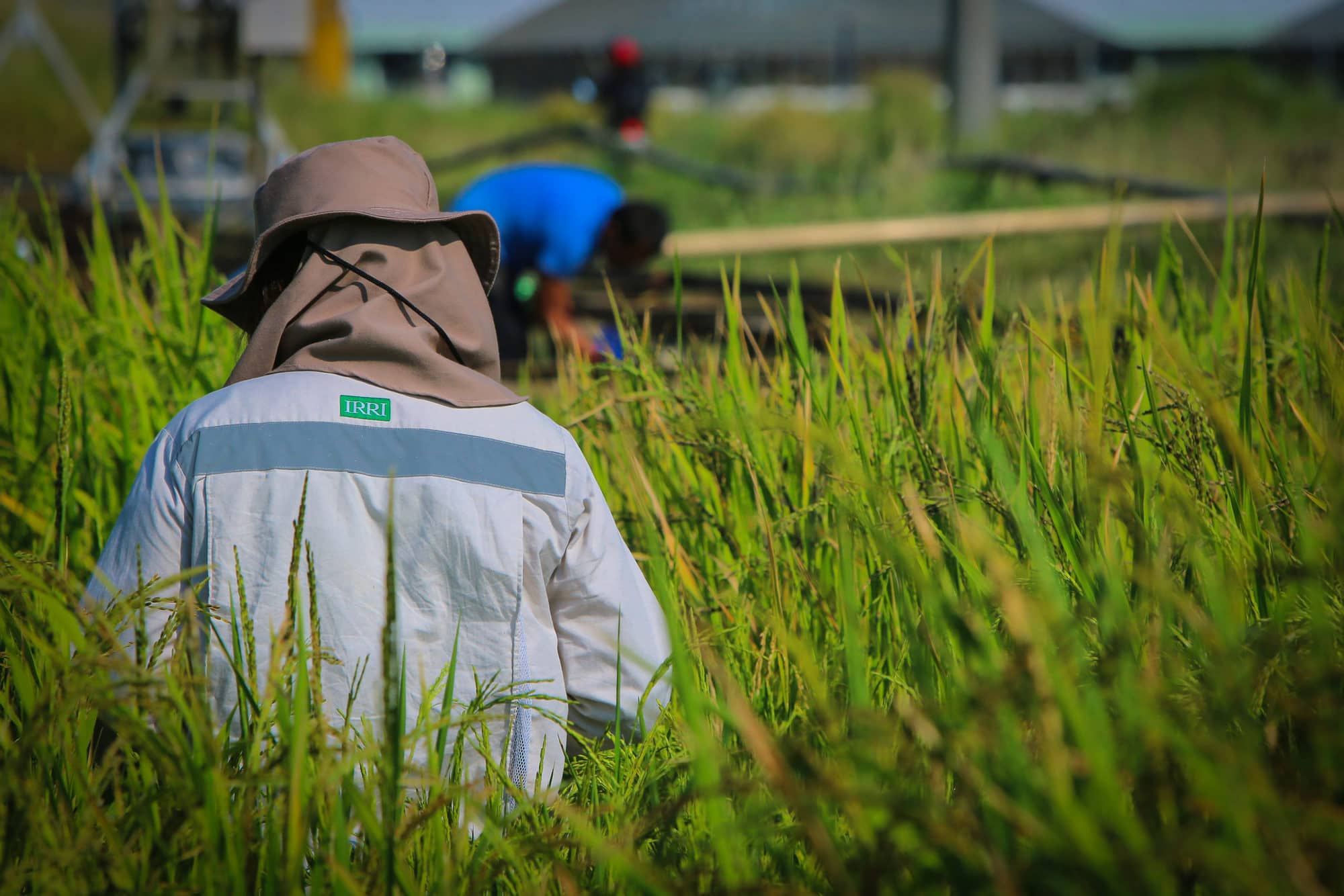
Climate change is affecting rice production in Asia and Africa, where the crop is a staple food for millions. Climatic extremes such as droughts, floods, extreme temperatures, and rising sea levels – which causes salinization of inlands – in Asia alone already affect production for about 30% of the 700 million poor who live in rainfed rice-growing areas.
CGIAR scientists from the International Rice Research Insititute (IRRI) and AfricaRice, together with national research and agricultural extension system partners, have long tackled the problem through breeding to develop new, climate-smart varieties of rice. Their drought-, flood- and salt-tolerant rice varieties are designed to adapt to rapidly changing climatic conditions.
Drought-tolerant rice
- Drought is the most widespread and damaging of all environmental stresses, affecting 23 million hectares of rainfed rice in South and Southeast Asia as well as large areas in Africa, where 70-80% of ricelands are rainfed.
- About 30 drought-tolerant varieties have been released by CGIAR and partners in several countries, including the Sahbhagi Dhan variety in India, Sahod Ulan in the Philippines, and Sookha or Sukkha Dhan in Nepal.
- The average yield advantage of these drought-tolerant varieties is 0.8-1.2 tons per hectare over drought-susceptible ones.
Flood-tolerant rice
- Floods cause farmers in Bangladesh and India to lose up to 4 million tons of rice per year.
- CGIAR-released varieties carrying the SUB1 gene – which makes rice plants better able to withstand complete submergence in water – have shown an average yield advantage of 1-3 tons over original varieties, after floods lasting 10-18 days.
- Some examples include the Swarna-Sub1 variety in India, Samba Mahsuri-Sub1 in Bangladesh, IR64-Sub1 in the Philippines, and Ciherang-Sub1 in Indonesia and Nepal, and FARO 66 and 67 in Nigeria.
Salt-tolerant rice
- Saltwater encroachment due to rising sea levels and lower rainfall threatens rice crops in coastal farming areas. In Bangladesh, salinity affects about one million hectares of arable land.
- CGIAR researchers at IRRI and AfricaRice have developed and released more than 20 salt-tolerant varieties, and have incorporated salt tolerance into popular rice varieties such as BRRI Dhan11, 28, and 29 in Bangladesh, as well as various varieties in India and West Africa.
- These salt-tolerant varieties have resulted in considerable increase and stability of productivity in salt-affected areas and, in some cases, led to expansion into areas previously abandoned because of high salinity.
Adoption of CGIAR’s climate-smart varieties of rice, together with adjusted management practices, has led to significant increases in yield and sustenance of production in climate change stress-affected areas, including those inhabited by the most impoverished farming communities. The varieties are now being planted by millions of farmers in South and Southeast Asia, and in Africa.



